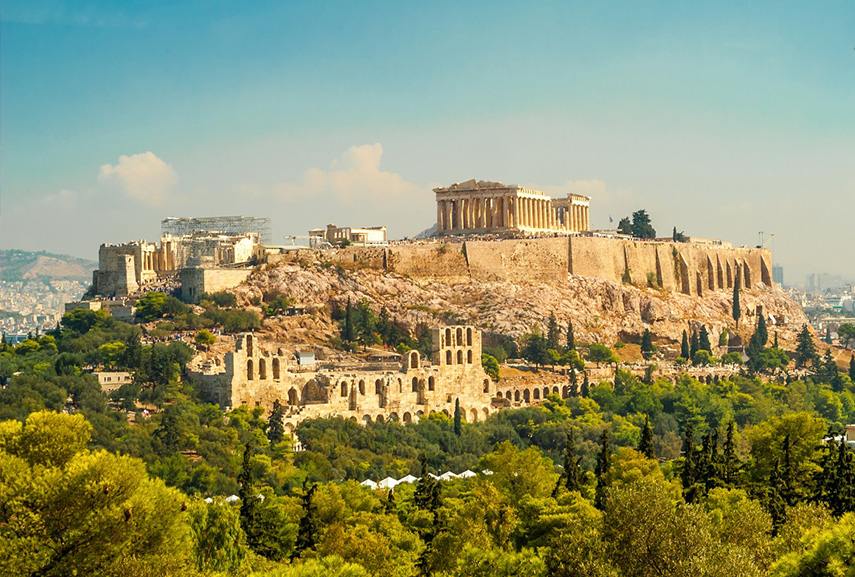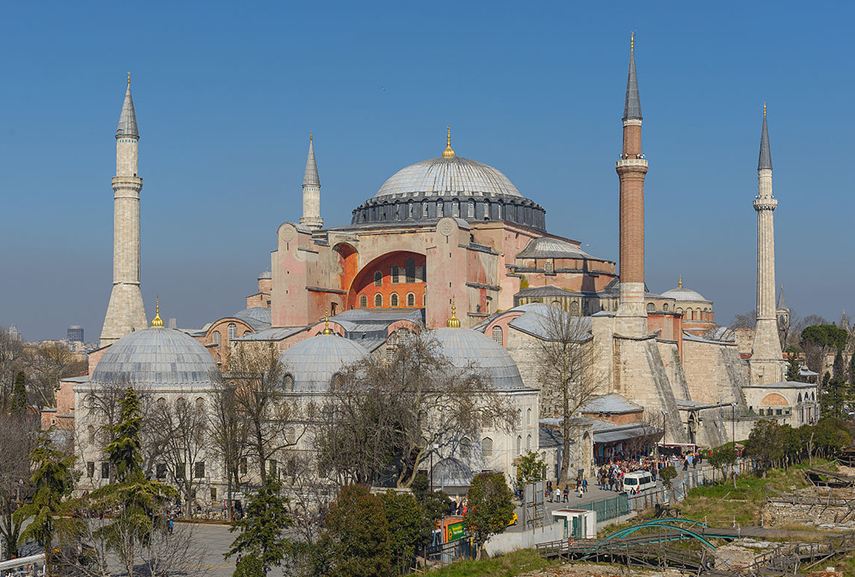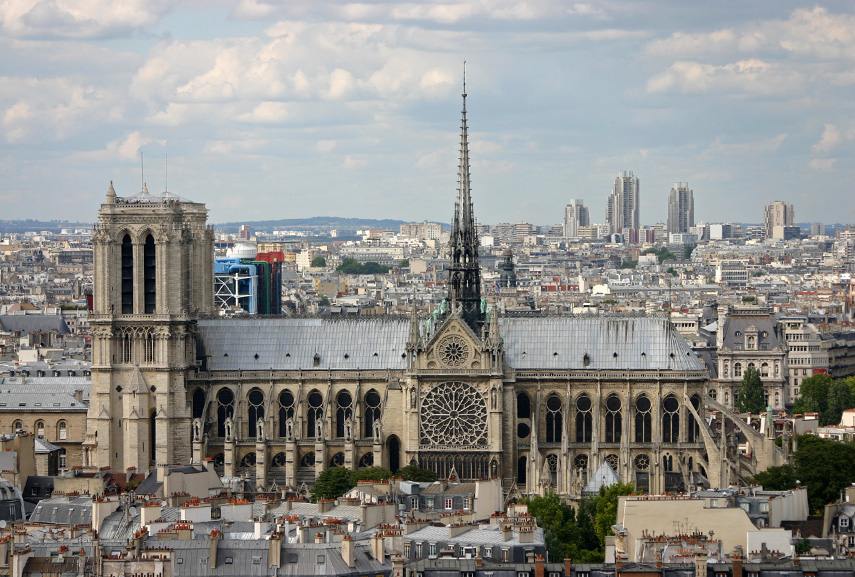The history of architecture is about as long as the history of humanity itself, and probably just as complex. The exact origin of architecture could be said to date to the Neolithic period, around 10 000 BC, or simply when people stopped living in caves and started handling the way they want their houses to look and feel like. The architecture that we’re talking about today is commonly assessed through visual terms and subject to ocular perception, but this urge to design an architectural artefact was fueled by much more than the mere need for aesthetic appeal. Architecture has proven to be many things – comfy, elegant, modern, brutal, indexical, vernacular – and yet, one of its most interesting aspects is its capacity to reflect the spirit of time, in a way that might be even more substantial than how we see it happen with art. The parallelism of history od architecture to human history is justified by its strong material presence that serves as the best physical evidence of societal change. Just looking at the buildings made in different places at a different moment in time would help us understand the evolution of architecture and our past without using any words. Human actions were embodied in architecture, and further clarified through the persistent endeavor to protect some of the built heritage, and to decide to let the rest of it fade and decay.
A Global History of Architecture – What We Study Today
So if Churchill was right about history being written by the victors, history of architecture and art is not exempt from that rule. The old buildings that we’re able to see and document today are the ones that belonged to the most developed and powerful societies, and those that survived the millennia are there to tell us just how carefully they were watched over. With that in mind, it comes as little surprise that one of the best kept ancient architectures is the Roman architecture, although it is not the oldest one. The purpose of buildings that were erected in antiquity and remain preserved today varies. Thus, we have the remnants of those that were sacral, dedicated to gods and made for religious purposes, and those that were built for the people (secular). This, too, illustrates the nature of different histories perfectly. Interestingly, since the old civilizations had a stronger faith in the after-life, preserving the body was another great source of inspiration for architectural design, and therefore, some of the oldest buildings in the world are actually tombs (the Egyptian mastaba and the pyramid, for example).

The Ziggurat and the Pyramid
When talking about architectural history in chronological order, one usually starts from the ziggurat, as it is one of the most symbolic built structures from our past. This is partly thanks to the Tower of Babel, a myth that has nonetheless been associated with existing structures (a ziggurat dedicated to the Mesopotamian god Marduk)[1]. The massive, terraced structures were built in Mesopotamia for ritual purposes, and they are considered to be the typological predecessors of the “real” pyramids. As the structure was stepped and successively receding toward the sky, the ziggurat (or the step pyramid) was often interpreted as a link between the earth and the sky, the way our ancestors saw it. However, in practical terms, its fortress-like structure was ideal for protection, and also for escaping the rising levels of water. The Egyptians were also building the step pyramids at first (you can take a look at Djoser’s pyramid, built during the Third Dynasty of Egypt by one of the first known architects ever – Imhotep). However, the form of the Egyptian tomb had progressed, and the three pyramids in Giza exemplify their upgraded appearance, the one they acquired during the Fourth Dynasty – with smooth sides, which people still tend to admire to this day[2]. Finally, stepped pyramids were found in Mayan and other Mesoamerican architecture as well, as their temples were typologically reminiscent of the Mesopotamian ones (even though they were built much later).

The History of Architecture Through the Eyes of Greek and Roman Civilization
Then on the other hand, the Hellenic people used to build temples in a completely different manner. The society of ancient Greece was the one to introduce the concept of public spaces, with the advent of the public square called agora. Placing an emphasis on civic life, the ancient Greek architecture was born of democracy and devoted to the people. The temple was part of the agora and although monumental, its character was open and the program was inverted – the rituals were carried out outside the temple. Instead of securing their temples with massive stone walls, the Greeks used columns and canopies. Interestingly, the Greeks designed them so that they would “correct” the distortion of human vision. They were the first ones to notice the incapability of our eyes to perceive objects as they truly are, and to use this as an input for architectural design, as they introduced the entasis (the intentional curvature of all lines on a temple). The curvature, paradoxically, helped the human eye see the temple as if it were straight.

Architecture in the Roman Era
After the Romans had conquered the Greek territories, they virtually took over and strongly influenced most of the Western architecture over the next centuries. While greatly inspired (in lack of a better word) by Greek architecture, the Romans introduced quite a few immense innovations themselves – the arch, an eminent architectural element that you wouldn’t believe was not used before the Romans mastered it (the Etruscans came up with the concept though), and concrete, although it was a bit different from the material we use extensively today. The rest is, literally, history – it was finally possible to build the dome, an early example of which we can see as part of the Pantheon, and to work with different types of arcades, helping the Romans make their aqueducts and triumphal gates[3].

Byzantine Architecture
Furthermore, the evolution of architecture continued as the ancient Roman architecture served as a starting point for the Byzantine architecture, which gained independence once the Eastern Roman empire separated from Rome and established a capital in Constantinople (then known as Byzantium, on the territory of today’s Istanbul). One of its main contributions is the further development of the dome, since they found a way to raise it on piers, using the three-dimensional triangular surfaces called pendentives. This means that it was no longer necessary for the dome to have a massive support beneath it (and if you think of it, most of the domes you see today sort of “float” above you). However, although it has made a major impact on European architecture, this architectural style is now best known for its transformation into the Ottoman Empire architecture, once the Byzantine territories were defeated by the Turks in the 15th century. Consequently, the building style started reflecting the Islamic sensibility and gave rise to a new kind of architecture[4].

Medieval Architecture
The medieval period was almost as dark in architecture as it was in other aspects. The first things that pop into your mind when you think of the Middle Ages must be the wars and the crusades, and it’s quite obvious that most of the architecture that survived all the following years is the kind that was used for defense. You will rarely come across the civic architecture from the medieval times today, but you will get a chance to see a castle or a fortress from the early Middle Ages here and there. However, in the late Middle Ages, three styles historically classified as “medieval” appeared successively: the Pre-Romanesque, Romanesque and Gothic architecture, all of which had roots in Europe. The Romanesque style was the first pan-European style since Roman architecture, and it was followed by the elegant Gothic style, a fine crossover between the dark era and the Renaissance. Gothic architecture was mostly nourished in France, and during this period, the potential of the arch and the vault was mastered, both in terms of aesthetics and technology.

The Renaissance – A Breaking Point in The History of Architecture Timeline
Finally, in the early 15th century in Italy, which never truly adopted the Gothic style in its entirety, the Renaissance introduced new ways of looking at reality, and most of it was mediated through architecture. It was the period in which perspective was acknowledged (although it seemed that the Greeks were aware of it as well), studied and understood as a new way of “achieving infinity”, as a point in which two parallel lines paradoxically meet[5]. This was studiously practiced through painting, but it was nonetheless embodied in architectural structures. Hence, an emphasis was placed on symmetry and proportion, and how they affect human vision, as well as how they shape our perception. Finally, the Renaissance meant reassessing classical antiquity and associating mathematics with aesthetics, which enhanced the discipline and connected the dots that were needed to re-establish architecture as an all-encompassing profession. So, besides having left a vast number of impressive buildings behind (mostly in Italy, specifically Florence), the Renaissance gave impetus to the theoretical advancements that happened in the following years, decades, even centuries. The architect considered to be the father of Renaissance is Filippo Brunelleschi, especially due to his contribution to architectural theory, closely followed by Michelozzo Michelozzi and Leon Batista Alberti.

Baroque Architecture
After the Renaissance had been firmly established in Italy and spread across the rest of Europe (in each country in a slightly different manner), it was gradually succeeded by the Baroque in the early 17th century. The Renaissance was characterized by symmetrical plans and facades, pillars and pilasters that adhered to the interior spatial organization, and a general concern with order and mathematical logic. On the other hand, the Baroque style promoted a more diversified, free approach to architectural design, driven by playfulness rather than rationalism. It was typified by the fragmentary ornamental elements (especially on the façade), plans that were not necessarily symmetrical, and a general lack of correspondence between the interior and the exterior of a building. If the Renaissance was the truth, the Baroque was the drama; the Renaissance was realistic depiction and the Baroque was trompe l’oeil; the Renaissance was a circle, the Baroque was an oval (literally – if you take a look at the plans, this is what you’ll notice). The best way to see the main buildings from this part of history is simply to go to Rome, as it is basically the home of Baroque.

Neoclassicism, or How Some Early Styles Were Revived
In the next few centuries, the 18th and the 19th, it seemed that the art world was put on pause, or even sort of rewound to its previous stages. A deliberate effort was made to return to classicism, which resulted in the emergence of neo-classical architecture and a series of revivals – Romanesque revival, Gothic revival, and a sort of American Neo-Classicism that is usually referred to as the Federal Style Architecture. This is what sometimes makes you question the period in which a building was made, especially if you don’t have any insight into its construction (remember – there is a Parthenon in Nashville, but this is only the most extreme example). This sort of regression was not overcome until the late 19th century, when Art Nouveau emerged as a new total style, and finally opened a gap for breaking with tradition. Much of the credit goes to the Industrial Revolution as well, which made the mass production of iron possible and revolutionized the process of construction and building at large.

Modern Architecture and the End of an Era
Many important things happened on the verge of the 19th century, both for the arts and architecture. Art Nouveau is widely seen as the first step toward Modernism, which made it crystal clear that we are done with classical architecture. This is due to a number of reasons, but it is appropriately illustrated by a single sentence signed by Louis Sullivan (the “father” of skyscrapers and inherently related to Art Nouveau): Form follows function. Modern (or Modernist) architecture literally turned the entire context of architectural design upside-down. Coinciding with some of the major cultural movements, such as the Bauhaus and De Stijl, it introduced functionalism and purified architectural form to the most radical extremes. It is possible to argue that it was simultaneously liberating and imprisoning, having made the architecture free (of ornament), and confined (by the universal language). Despite the latter and the fact that its scope is still quite vague even from today’s point of view, modernism came as one of the most important shifts in architectural design and expression. Its significance lies in the fact that it continues to inspire architects today, both in a good and a bad way, and of course, because it was able to evoke a critical response – postmodernism.

Contemporary Architecture (If There Is Such Thing)
The contemporary always seems to be shifting forward, thus writing about the present in a historical context seems tricky. If you take a look at the way architects approach design today, you’ll find several different responses. Some of them are neo-modern (as we have entered the phase that is very distant from the modern period, so this revival is possible), some still remind us of post-modernism, and some we are not sure how to call – deconstructivism, perhaps, or parametricism as a possibly new type of universal language, or something else, that hasn’t been named yet. Technological improvements, especially computer programs but also the ones that are directly related to construction, make almost everything seem possible. The only relevant parameter is the cost, and of course, ethics. But as mentioned earlier, architecture rarely escapes the imprints of the era it is being built in, and whatever becomes out of it in the next few decades, it will be the echo of our generation. Another possible way of looking at it is adopting the idea that history reoccurs, which would mean that postmodernism was the contemporary version of the Baroque, and we are much likely to return to the new revivals.
References:
- Harris, Stephen L. (2002). Understanding the Bible, McGraw-Hill.
- Blake, E.; Knapp, A.E. (2004). The Archaeology of Mediterranean Prehistory, Wiley Blackwell.
- Wheeler, M. (1985). Roman Art and Architecture, Thames & Hudson.
- The Editors of Encyclopædia Britannica. Byzantine art, Encyclopedia Britannica [September 24, 2016]
- Tyler, C.; Kubovy, M. The Role of Perspective in Shaping the Renaissance, Science and Art of Perspective [September 24, 2016]
- Le Corbusier (1986). Towards a New Architecture, Dover Publications.
Featured images: Pieter Bruegel the Elder – The Tower of Babel, image via Wikipedia; The Eiffel Tower in January, 1888. image via vox.com; Superstudio – Monunmento Continuo, 1969, image via MAXXI.






